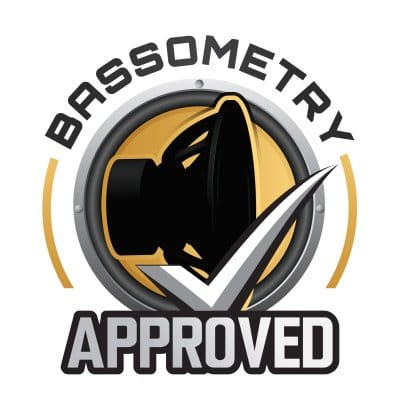Review: Beyma 12LEX1000Fe
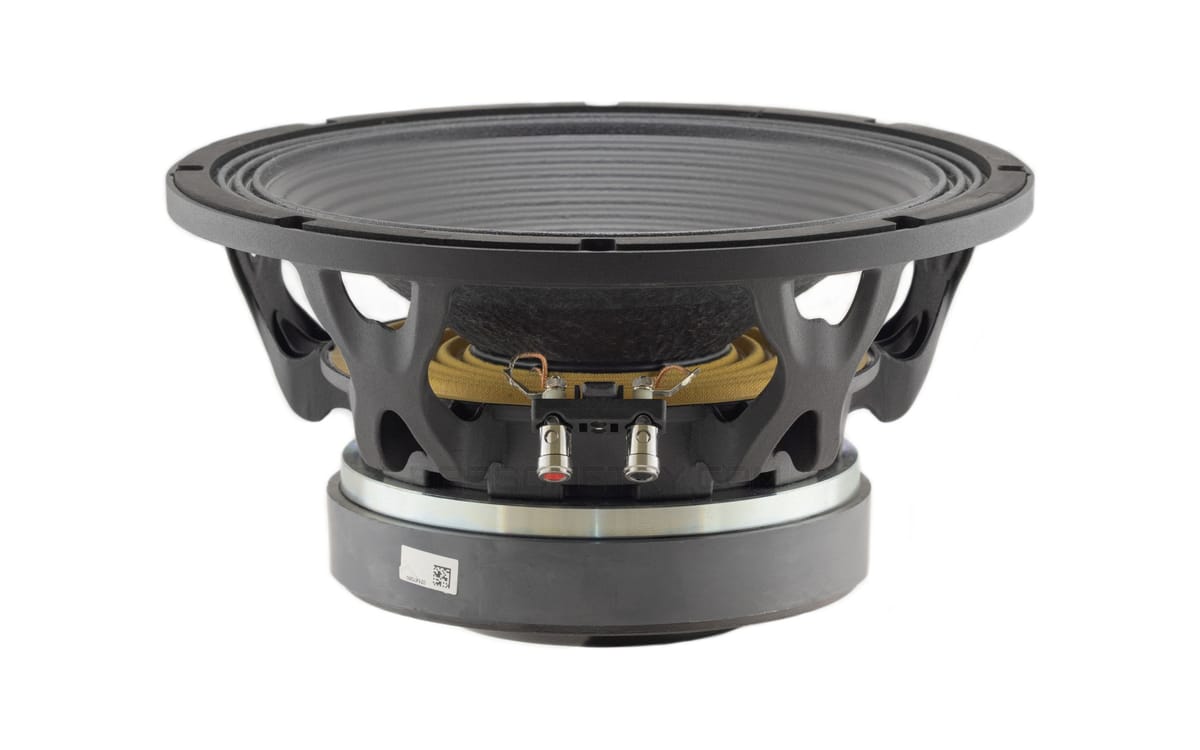
This is Beyma 12LEX1000Fe, featuring Exclusive Malt Cross® Technology cooling system designed to ensure high power handling and low distortion - so they say. With a more conventional ferrite motor but serious ambitions, it enters the lab ready to prove its worth.
This review is sponsored by ms-sound (www.ms-sound.cz), who kindly provided the speaker for testing. Rest assured that while sponsorships are very welcome, all technical results and measurements remain completely independent and unbiased.
Beyma doesn’t market this unit - or most of its drivers - for specific applications. It’s more of a “take it or leave it” philosophy. If you're buying a driver like this, it's assumed you know what you're doing.
Looks and build quality:
The 12LEX1000Fe clearly positions itself as a high-end subwoofer performer. With its cast aluminum frame featuring distinctive X-shaped spokes, heavy double-sided cone weatherproofing treatment, large motor, and a 1000 W power rating, it fits that category well. The design feels mature and purpose-built, with a clear focus on professional performance in every aspect.
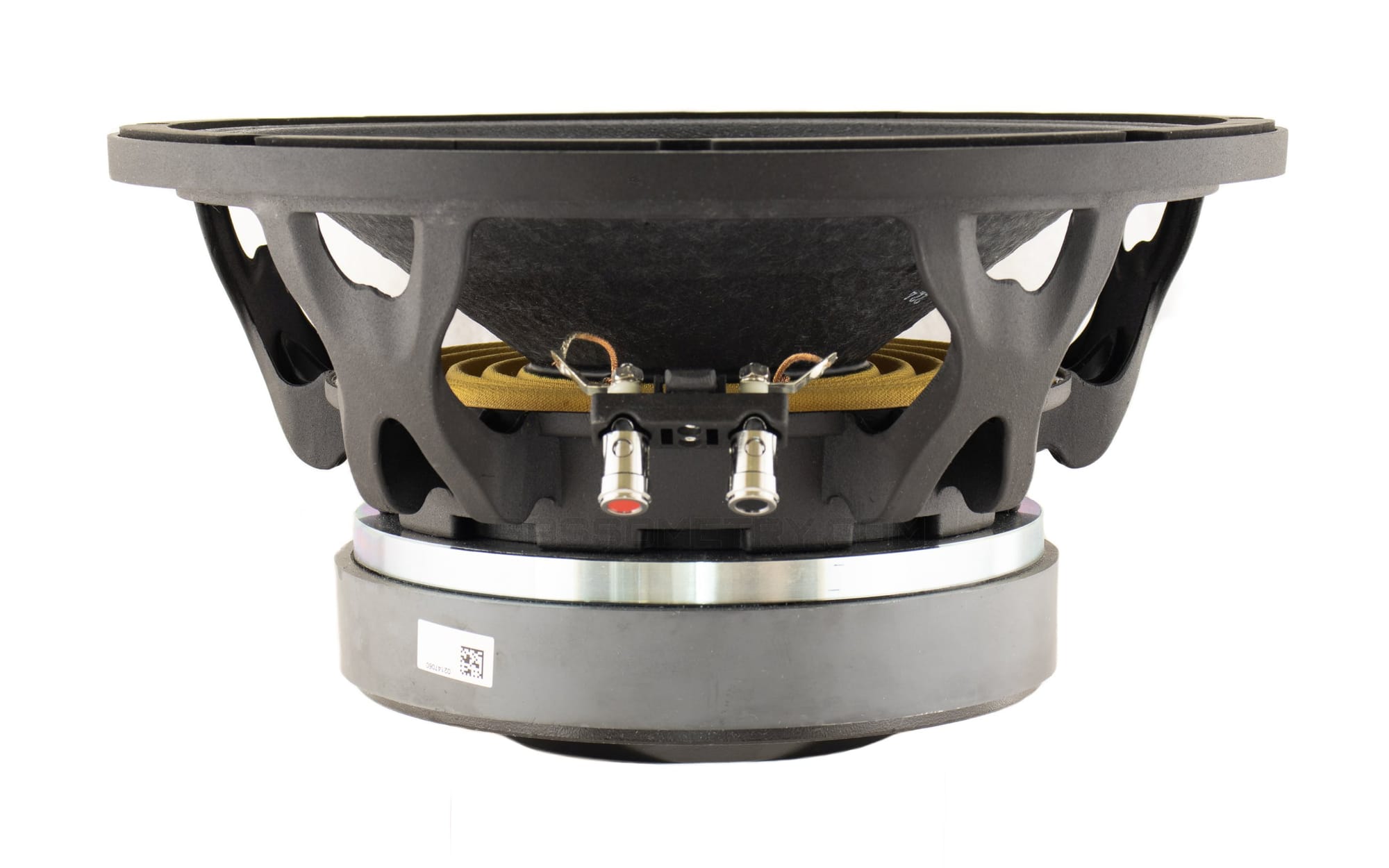
Under the hood, there’s a 3.5" in/out copper wound voice coil, stabilized by an 8" spider with good stroke potential. Color-coded push terminals connect to in-spider woven tinsel leads. With a 5.5" dustcap, helping to further optimize the straight cone integrity, it sure looks mighty.
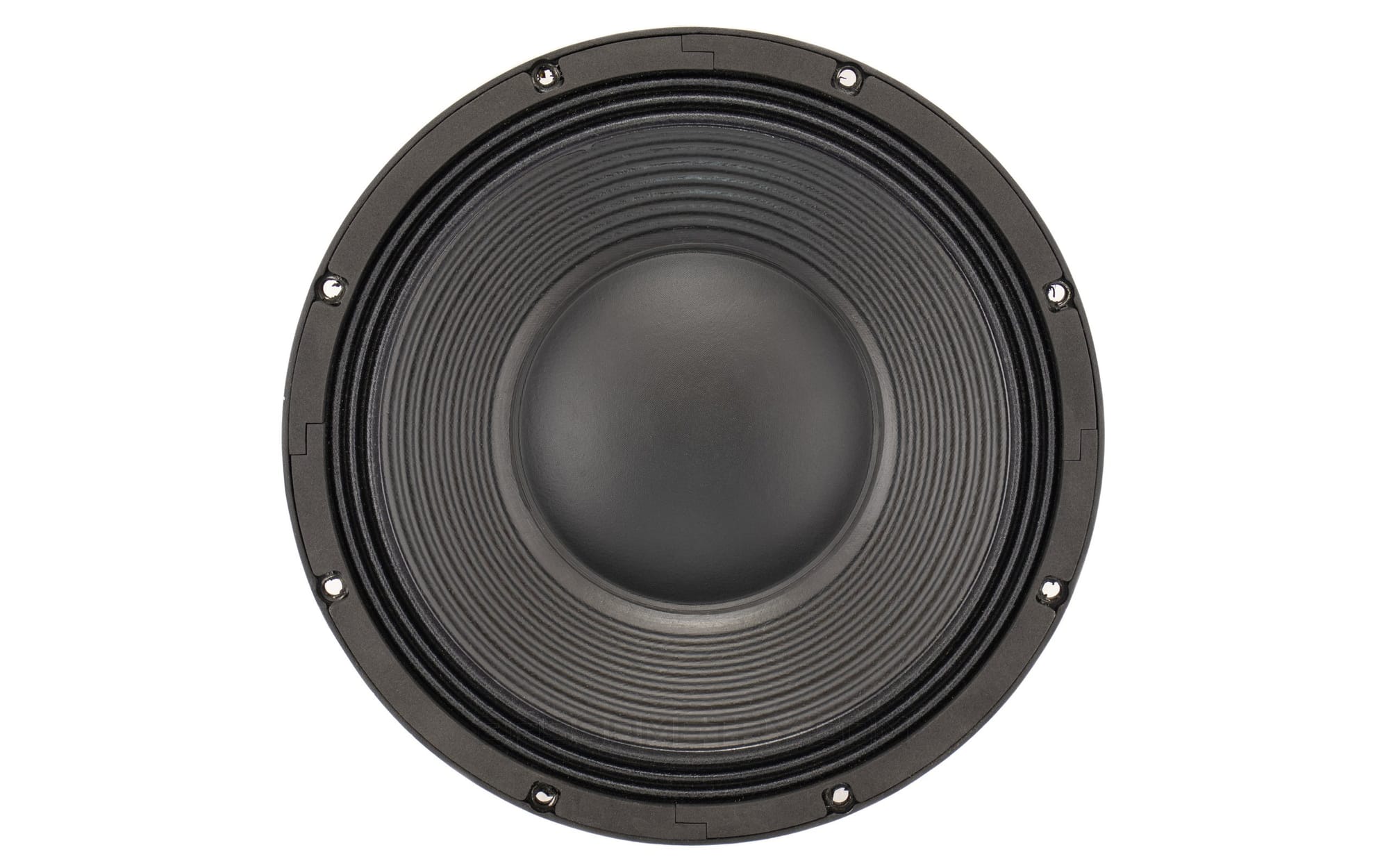
Cooling is handled through extensive venting: a generously sized center pole vent, eight small direct voice coil vents, and ten additional vents positioned above the top plate of the magnetic structure.
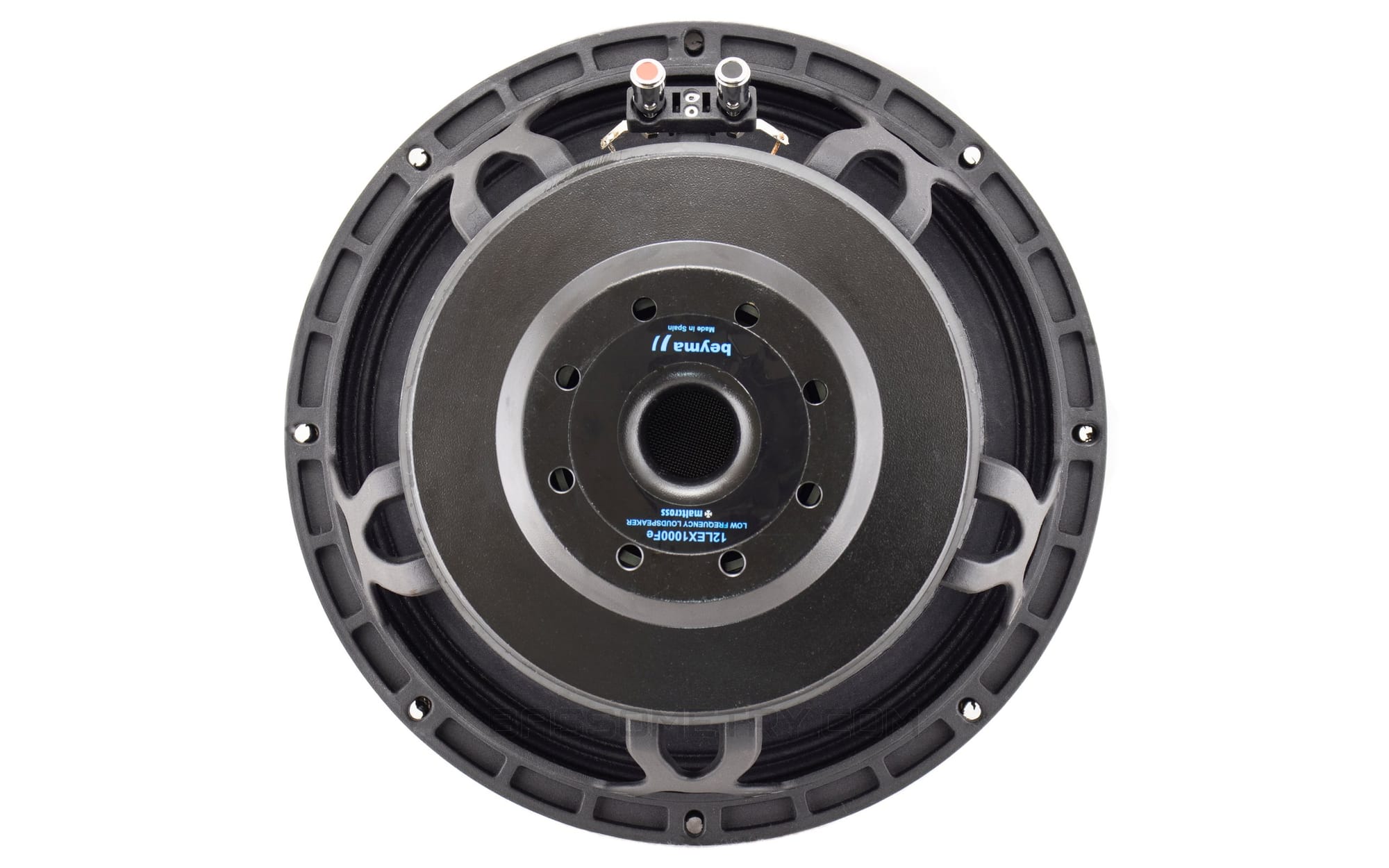
Beyma also highlights its proprietary internal Malt Cross® Cooling System in the datasheet, claiming reduced power compression. While I don’t have engineering documentation to confirm those figures, we’ll examine the power-related behavior later in the review. With a figure of 1000 W AES power on a 3.5" voice coil, it certainly looks like engineering was done in that department, not just marketing fluff.
Overall, the mechanical execution looks solid and built to last, supporting Beyma's own words: "...for safe use in the worst climatic conditions".
Driver specifications:

- Size: 12" type
- Power Handling: 1000 W AES
- Impedance: 8 Ohm
- Frequency Range: 50-1500 Hz
- Sensitivity: 95 dB (1W/1m)
T&S parameters set:
The measured parameters are a fair match for a "*lightly broken-in" unit. Qes and Bl are slightly below published specs, but not to a concerning degree, with a gooda good probability of settling closer to specs when fully burned-in. The driver was measured following an undocumented torture session during *high-power-to-reckless-level listening tests the previous day. And trust me, we made it warm.
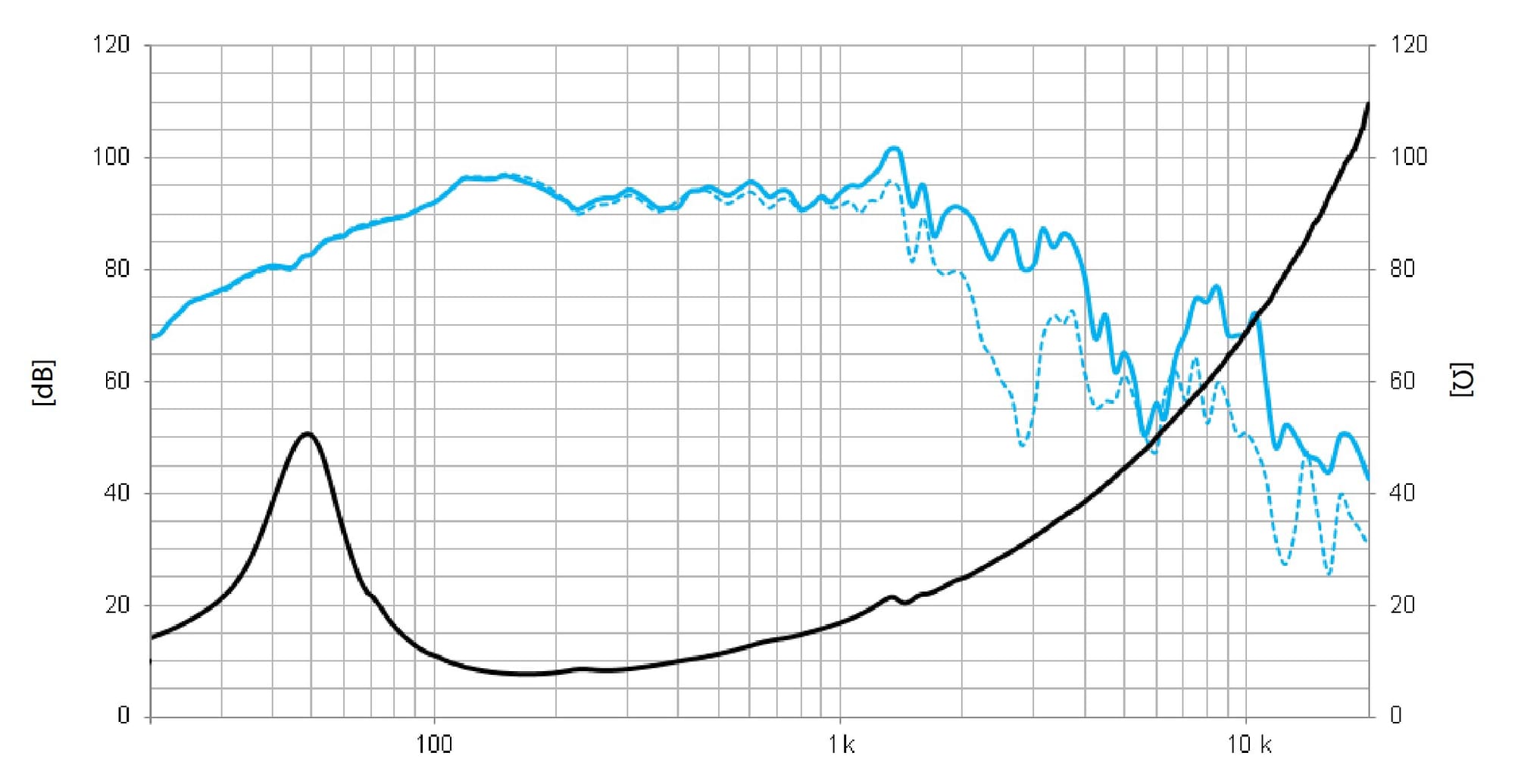
The Xmax value includes a plus suffix in my measurement data, as the driver performs admirably under overload conditions — maintaining control and composure beyond its rated excursion specification.
Here is the downloadable specsheet:
Performance evaluation and general rating:
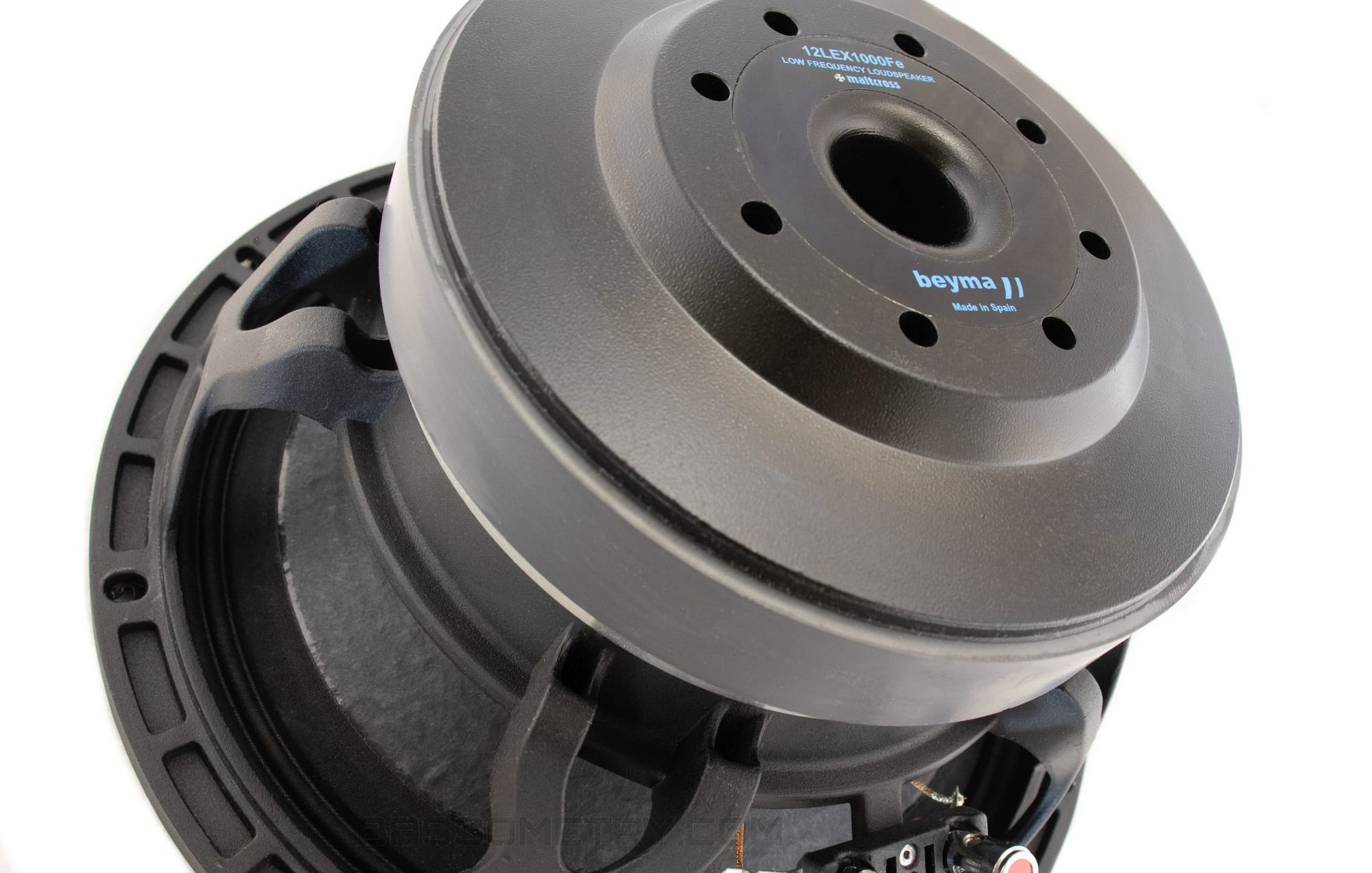
The driver performed well within its specifications. In free air, it sounded strong yet relaxed; in the test enclosure it delivered a warm and pleasant tone of old-school speakers. Very likable. As with most 12" PA drivers with aggressive cooling, the ratio of mechanical and airflow noise to output SPL can sometimes feel a bit on the poor side for this driver size - despite design efforts to mitigate this. At full power, some distracting noises are audible, though still better than most within the class. 12LEX1000Fe can be considered as a "quieter one" regarding unwanted noises, more so for pure sine tones.
The driver showed good noise control overall. If you're specifically looking for a capable 12" PA bass driver, this one is certainly worth considering.
With performance score of 89.6%, this product aims high, approaching near perfect performance for its class.
On the other side, displacement-to-dollar score makes it clear: this is a driver built for specific applications, and I'd hesitate to recommend it blindly for general-purpose or “just grab a woofer” scenarios.
Overall, the Beyma 12LEX1000Fe stands as a capable and well-engineered driver with clear professional intent. It shines in controlled PA setups where reliability and mechanical strength matter more than raw air movement per dollar. While it may not be the most cost-efficient option for general purpose use, it absolutely earns its place in more refined or demanding applications.
- Buy if: You want an excellent 12" high-end bass driver for a specific PA deployment.
- Skip if: You want to move a lot of air by a single driver cone for little money.
*The following section is available to Bassometry members only.* (Free sample):
Large signal and performance results:
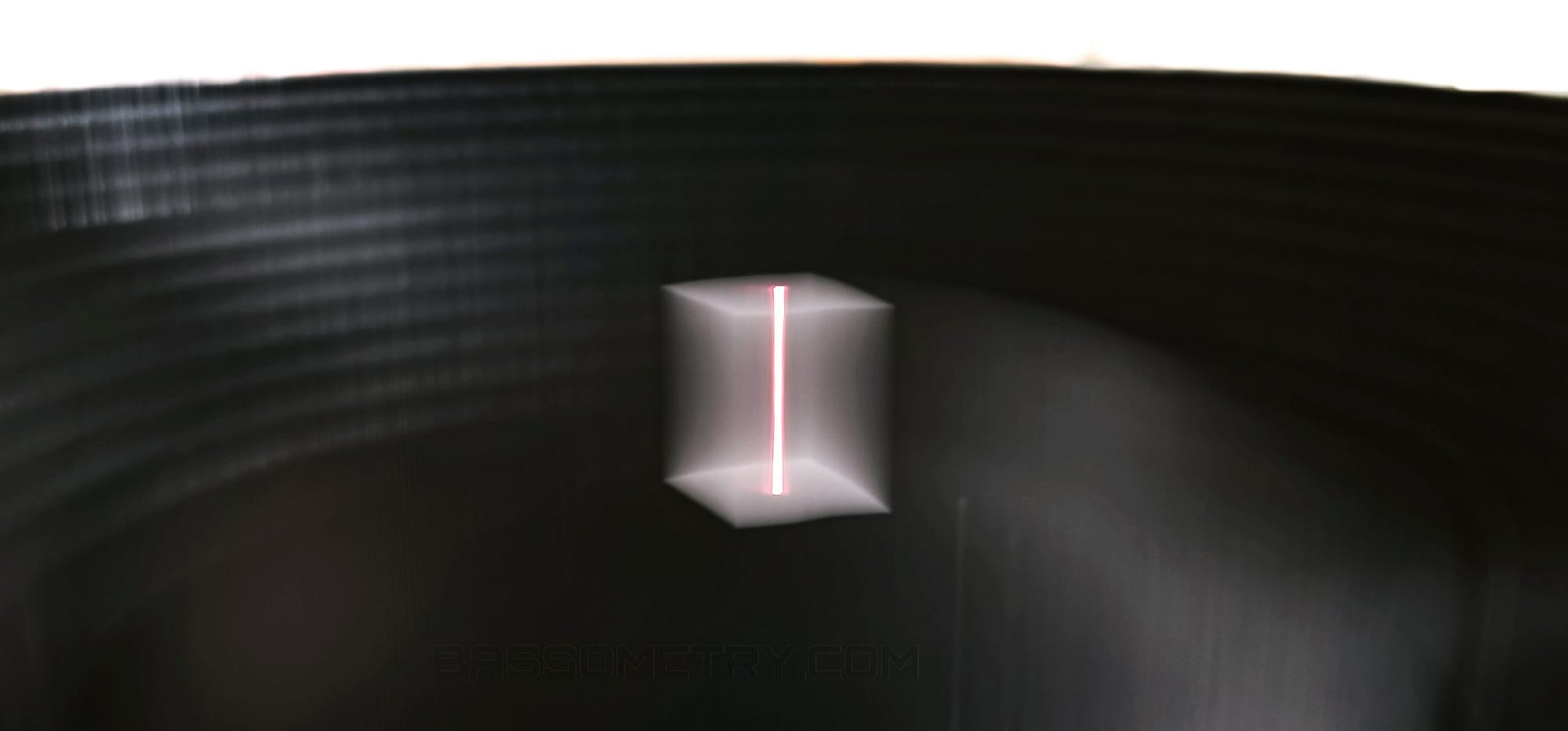
This section presents the driver’s behavior under high excursion and high power power conditions. Measurements are conducted using controlled lab procedures to reveal transducer behavior beyond small-signal specs. For a full explanation of the test methodology, please refer to our Bassonomy section.
What does the score say? That it is one nicely engineered, sturdy driver. As it is one of the first drivers in the test, I feel lucky to see it touching 90% score, a possible hall of fame territory.
Resonance frequency shift of 30.8% and Impedance shift at Xmax of 48.5% indicate a good compromise on cone control, steered a little on the efficiency side.
DC cone offset:
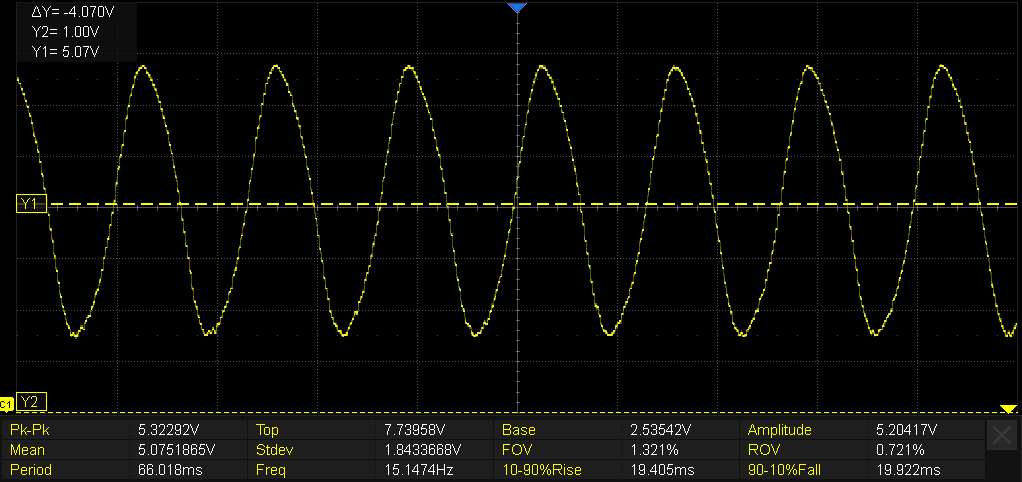
In this case, negligible. Measured under 0,35 mm across the usability spectrum, it was firmly under 5% of Xmax (meaning 0,55 mm threshold for receiving penalty here). And let me tell you what I found about speaker suspensions... In the large center position platteau, depending on the driver, it is not uncommon to push the cone by such distance, and the cone will just stay there. So, this result cannot be more ideal. Engineers at Beyma certainly had cone control in mind, and that care brought this very exceptional result.
15Hz - 50Hz at Xmax behavior: There was no unstable behavior during high power frequency sweeps, the driver was always under control. Power draw was well within expected limits, securing sustainable operation across the working frequency range at full tilt. The sturdy cone held under high frequency strain. Brief 75 Hz push showed remarkable strength.
THD figures: While the distortion figure deep below resonant frequency outside the usable band fell to just "good" performance with 6.6% for true subwoofer work, the result for 50 Hz "where bread and butter" is for this driver, just breached "excellent" behavior at 50 Hz with 1.9%.
Excursion behavior: This unit performed impressively under overload conditions. It comfortably handled a short-term overload of +3 dB, and even tolerated undocumented +4 dB bursts without any signs of distress - additional audible artifacts, unpleasant mechanical noise, or damage. This was with 13.5 mm and near 15 mm excursions respectively. Mechanically, the driver maintained distortion levels below 10% to up to 2,2 dB boost over the specified Xmax value. Well played here.
SPL compression test:
Note that this test reflects an isolated low-frequency scenario. Once the driver is placed in a specific enclosure, results can vary significantly. However, as a point of reference, this data set still holds substantial informational value and offers useful insight into the driver's raw performance characteristics..
It is not that easy to establish firm control over the cone, while not causing the suspension to eat up too much power from the supplied signal. Beyma did tremendous job in this department though, allowing this piece to operate with almost +3 dB overload beyond Xmax before the output level rises slower than the input, confidently confirming overload point +2.2 dB set by THD limit as the limit of its "peak usability", while still maintaining superb control. At Xmax, suspension and Bl decay compression measured 1.21dB, increasing to 2.46 dB at Xmax +3 dB. These are great results that reflect strong performance and control.
Final words: "Yes, you want this." Totalling 89.6% in our unforgiving tests, with great overload buffer, this is an excellent behaving, well built, sturdy driver worthy of high end deployment. There is nothing more specific to mention about this unit, apart from the old-school relaxed warm sound and all the technical praise. Listing price for this unit is quite average, but if you manage to strike a deal of street/retail price, you will be pleased with the value of this one.
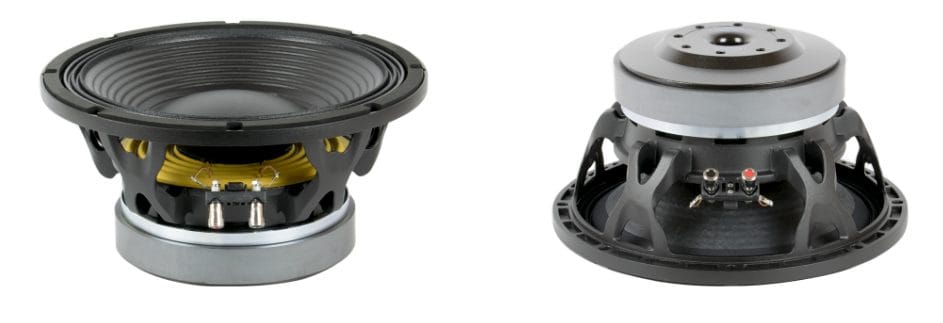
Additionally, the 12LEX1000Fe passed all tests and reasonings behind recognition of its excellence, therefore it is honored with a platform approval badge. Well done, Beyma!
